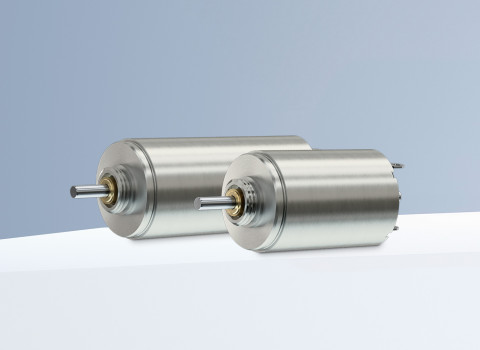
Can drones safeguard Europe's wildlife?
11th November 2025
How advanced drive systems are improving biodiversity monitoring
While there have been some signs of recovery to Europe’s biodiversity in recent years, most of the continent’s protected habitats and species have poor or bad conservation status. Unmanned vehicles such as drones have become essential for biodiversity monitoring, and thanks to advancements in micromotor technology, these systems can now operate with greater precision and discretion.
Only 15 per cent of EU habitats are in good conservation status, while 81 per cent of them that are monitored are in critical or degraded status. The European Environment Agency (EEA) further reports that a number of species, including freshwater fish, amphibians and birds, are in severe decline.
Yet conservationists are often forced to make decisions with limited or outdated data. Traditional field surveys, though vital, are increasingly too slow, costly and invasive, placing additional stress on already vulnerable wildlife. Without faster, more accurate monitoring methods, Europe risks losing biodiversity before it can even be fully understood and supported.
Why drones are making a difference
Able to chart forests, track wetland birds, fly down rivers and venture into regions too distant or dangerous for people to access, unmanned vehicles such as drones are transforming the exploration of ecosystems. Silent, stable and effective operation is essential as even slight vibrations or mechanical noise risks disturbing animals and could compromise data quality.
Flight duration, payload capacity and stability all hinge on the performance of a drone’s motors. Equipped with advanced motion systems, modern drones can manoeuvre cameras and sensors with exceptional precision — capturing high-quality data while minimising disturbance to wildlife.
The right motor technology
Reliability and miniaturisation lead the design of motor solutions for drone applications. Motors need to be packed into small mechanical spaces without sacrificing torque or efficiency and remain operational for hours in long-endurance flight with minimal maintenance.
Zero vibration on smooth operation means stable data acquisition and smooth flight trajectories, the prerequisites for reliable observation of ecosystems over extended timescales periods.
Different types of drones require different motion solutions depending on their size, weight and intended use. Small brushless gear motors are usually chosen for efficiency, compact size and long lifespan, ideal for sensor actuation and flight control. Stepper motors provide repeatable, accurate positioning — ideal for camera placement or scan mechanisms that must be correct over hundreds of moves.
For extremely space-limited applications where compactness and precise positioning are essential, miniature stepper motors such as FAULHABER's AM0620 series can be considered as a reliable option. Unlike conventional brushless DC motors that rotate continuously, stepper motors move in small, controlled increments, allowing accurate, repeatable positioning of components like cameras or sensors.
For drones requiring exceptionally flat designs or tight weight constraints, FAULHABER’s 1512 series flat gearmotors offer high torque in a low-profile format. These drive solutions allow engineers to integrate smooth, quiet and stable motion systems without sacrificing flight time or payload capacity.
Engineering for conservation
Each habitat is unique in its challenges. In coastal zones, where salt and strong winds test endurance, motors must deliver reliable power and corrosion resistance to ensure stability and performance. Elsewhere, mapping forests requires agile, precise movement to capture high-definition photos.
In such applications, the optimum motor delivers smooth torque, reduced vibration and class-leading drone performance. But the potential doesn’t end there. As drones become even more autonomous, they can track migration patterns in real time, map coral bleaching across entire coastlines or detect illegal pollution activities before significant harm occurs.
Equipped with thermal, acoustic and multispectral sensors, tomorrow’s drones will help scientists monitor not just where species live, but how they adapt, recover and interact as environments shift. By pairing advanced micromotor technology with intelligent sensing and AI-driven analytics, the conservation community can move from reactive observation to proactive protection — building a faster, more responsive picture of Europe’s changing ecosystems.
Accurate, high-quality data translates into better environmental choices. A combination of advanced motor systems and autonomous monitoring allows scientists to study ecosystems efficiently without leaving a footprint, helping to protect Europe’s biodiversity.
EMS supports end customers in choosing and integrating motors, encoders and control systems optimally suited to their mission tasks. To check out our full product range here.


